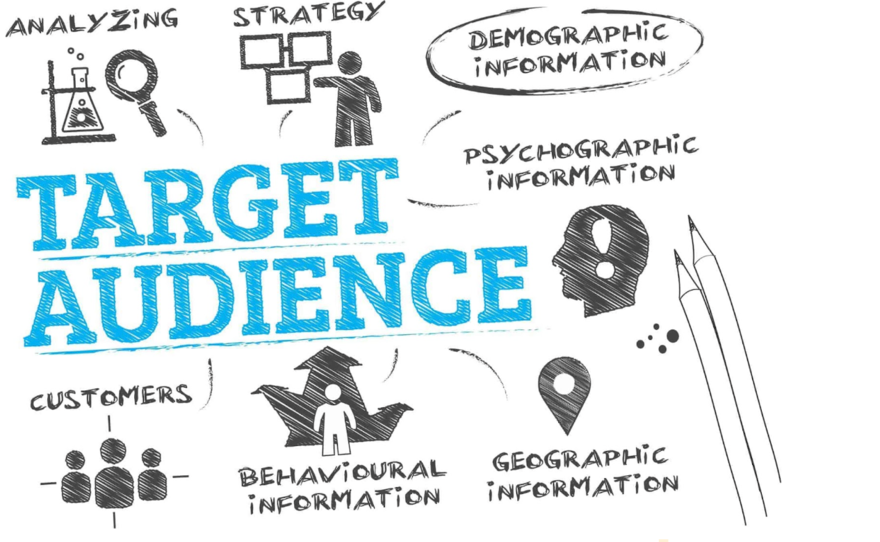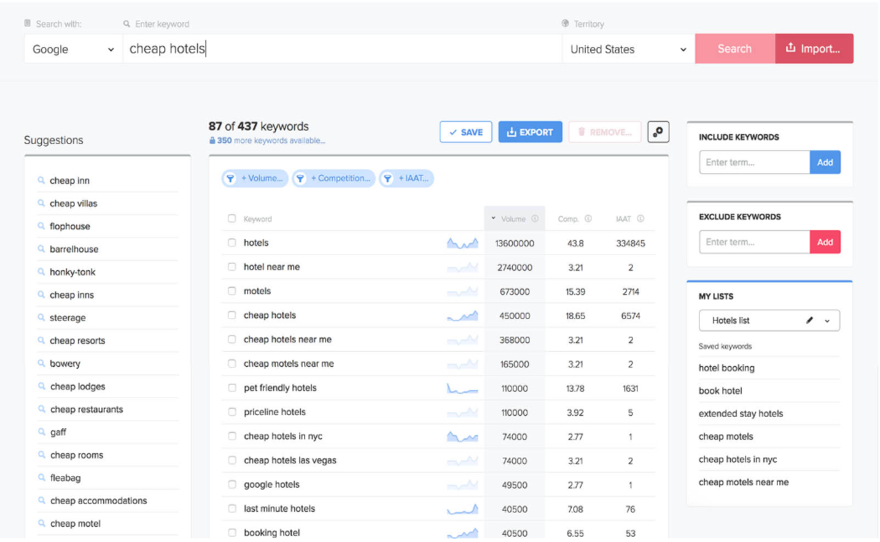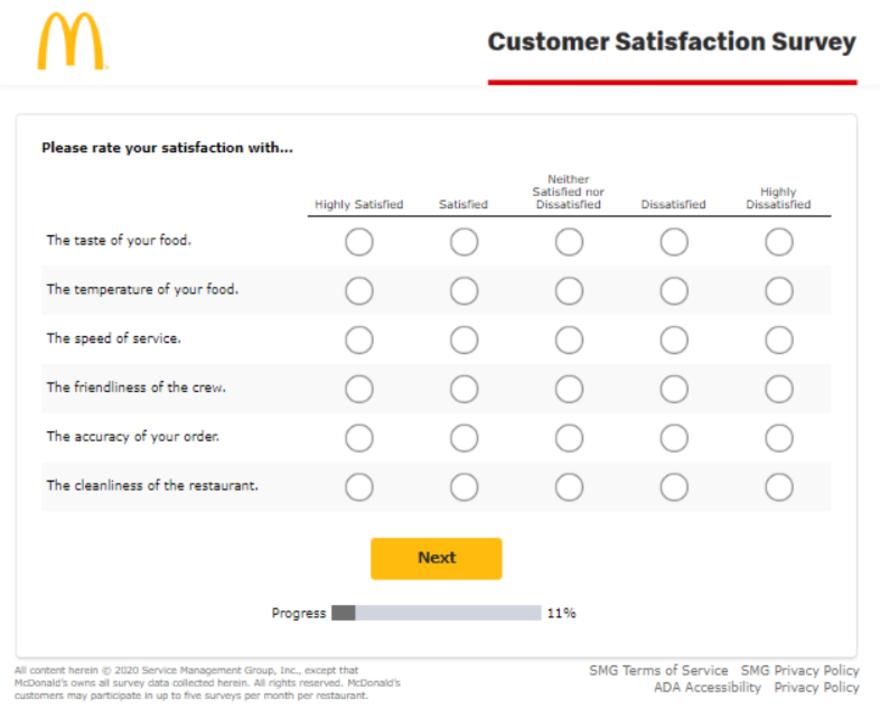Target Audience: What Is It & How To Find Yours
If you click to purchase a product or service based on our independent recommendations and impartial reviews, we may receive a commission. Learn more
The better you know someone, the more you understand them. This applies to our personal lives but also plays a major role professionally, especially when it comes to selling products and services to people so you can acquire customers online. If you don’t know your target audience like the back of your hand, then you’ll probably struggle to connect with them.
But what is a target audience, and how can you find yours? What do they look like, where do they hang out online, and what motivates them? We’ve got these answers and more with this guide to how to find your target audience.
What Is a Target Audience?
A target audience is more than a marketing buzzword and acts as the driving force of your strategy. Imagine a specific crowd – your VIPs, if you will – who are most likely to engage with your product or service.
This is your target audience. Understanding them is what you want to achieve business-wise because tailored messaging hits differently. It resonates, engages, and converts. In a nutshell, knowing what makes your target audience tick holds the key to driving your successful business.
Examples of a Target Audience
Businesses often look at a range of demographics, including:
- Age
- Gender
- Income
- Location
- Interests
- Lifestyle choices
- Career field
For instance, a luxury vehicle brand may target high-income earners aged 30-50 who are interested in automotive technology and fast cars.
Or picture a health-conscious person in their 30s, living in an urban area, who’s all about organic living. They’re a prime target for an organic food store because they likely value quality over price.
It’s all about digging a little deeper and learning the psychology of what drives people to make specific decisions, and if they’re the type of customers who will make positive ones regarding your business.
How to Define Your Target Audience?

Learning how to find your target audience requires a mix of research, gut feeling, and data crunching. Start by looking at your existing customer base and spotting common traits. Or if you’re starting a new business, look at competitors to see the types of consumers they target.
Dive into analytics to identify patterns in behavior, location, and engagement. Don’t just stop at who they are, either. Dig deeper. What are their needs, likes, or the issues they face? Consider using surveys or customer interviews to get inside their heads to garner more insights and real-life customer feedback.
Defining your target audience is more than merely identifying who they are and what they look like. Really, it’s about what makes them tick and how they land on the decisions they make.
Find Out More
- See 11 Digital Marketing Tips to Help Dominate the Online World.
How To Find a Target Audience for Your Business
There is no one-size-fits-all approach to finding your target audience. You need a combination of factors, all backed up by data. Let’s take a look at the key actions that’ll make you a pro with your target audience.
1. Understand Your Business
First of all, you need to know your business inside out. Align your audience with the core values and mission driving your company. What you offer should click with who you’re targeting.
What’s the USP?
Your unique selling point (USP) is the foundation of the company, and it points you in the direction of an engaged target audience because you’ll see what they love. You may also want to think about your unique value proposition (UVP) as well.
Keep an Eye on the Market
Don’t underestimate the importance of competitor analysis. It’s a goldmine for market trends and fine-tuning your audience. While there may be a few disparities, overall, your competitors will have a similar target market to the one you want to connect with. We recommend conducting market research for your online business to help get a firm grip on your audience, competitors, and more.
2. Create Buyer Personas
Creating buyer personas will give you something tangible to refer to when it comes to your target audience. Think of a buyer persona as a sketch of your dream customer, detailed down to their likes and dislikes. You can see a list of persona examples in our full guide.
Start with market research to get the lay of the land. Then, dive into demographics and psychographics to add color to your persona.
And don’t forget to pinpoint their pain points and aspirations. All these steps together will give you a well-rounded, actionable persona and provide a roadmap for laser-focused marketing that strikes a chord.
3. Analyze Existing Customer Data
The details are in the data. Use data to get a read on who’s engaging with your brand. It will help you spot trends and define your targeting strategy accordingly. Don’t just stop there – segment your audience for laser-focused campaigns.
4. Social Media Analytics and Tools
So, where do you find this data? Your CRM, website analytics, social media, customer surveys, sales data, and any support logs from chats online with previous customers are good places to start. Social media and tools can be particularly beneficial:
- Social media: These platforms have built-in analytics tools that provide detailed insights into user engagement, reach, and demographics for a tip-top social media strategy.
- Tools: Use Google Analytics, Facebook Insights, and similar platforms for comprehensive data on everything, from average time spent on a website to the average age of people interacting with your business. If you haven’t already, set up GA4, the latest version of Google Analytics.
5. Keyword Research for SEO

Finding the right keywords makes all the difference, because people will be able to find you in search engines. A good keyword strategy lets you work out how to find your target audience and connect with the right crowd to make your content stand out.
Why Keywords Matter
Think of keywords as magnets. They pull in users actively searching for what you offer. They’re the SEO glue between your content and search queries. You can find out more on how SEO works in our full beginner’s guide.
Use Research Tools
Don’t guess what your audience wants. Instead, use tools like Semrush and Google Keyword Planner. They offer information on search volume, competition, and even unearth some keyword gems you might’ve missed.
Implement Your Keywords
Now that you’ve got your keywords, it’s time to weave them into your SEO fabric. Meta descriptions, titles, content – get those keywords in there. But keep it natural because stuffing your content with keywords will make it sound unnatural and alert Google.
6. Market Research

Dive deep into market research to truly get your audience. Conducting surveys and interviews gives you direct insights into what your customers crave. But don’t just stop there – perform competitor research too, which is equally vital.
Not only does it show you what’s working in the market, but it also reveals gaps you can fill. Do it right, and you’re connecting with your target audience on a whole new level.
How To Reach Your Target Audience
You’ve defined your target audience and are ready to reach out. But how do you put everything you’ve learned into action? Let’s break down some effective strategies to connect with your audience in a way that resonates.
1. Grow Visibility on Social Media
Social media is a double-edged sword. On the upside, platforms like Facebook, Instagram, and Twitter allow you to engage directly with your audience and can help you unlock your brand’s potential on these platforms. You can post updates, run campaigns, and even respond to queries in real time.
However, the downside is the noise. Your message can easily get lost in a sea of posts, memes, and viral videos. Plus, algorithms can be tricky, often requiring paid promotions to get your content seen. You need to be consistent to land your content, and optimize for social media SEO in order to get your content and products in front of the right users .
2. Build an SEO Strategy
Get SEO right, and you’ve got a steady flow of targeted traffic to your website. It offers a high return on investment, builds trust, and has a lasting impact with your site appearing on the first page of search engines in the best-case scenario. But it’s not instant magic. Even the SEO basics demand time and know-how. From algorithm shifts to learning best practices, it’s always evolving, so you need someone involved who knows what they’re doing.
3. Influencer Marketing
Influencers can amplify your message to a broader yet still targeted audience. The pros include instant reach and credibility. People trust influencers, so a recommendation can go a long way. But beware of the cons. Not all influencers are created equal, and a mismatch can harm your brand. Plus, influencer rates can be pricey, especially if you’re targeting high-profile personalities.
Find Out More
Learn How To Build an Influencer Marketing Strategy in our full guide for the dos and don’ts of working with influencers online.
4. Email Marketing
Email is direct and personal when done right. It’s a fantastic way to keep your audience engaged with regular updates, offers, and news. But tread carefully. Too many emails or irrelevant content can turn your audience off. The line between engagement and intrusion is thin in email marketing.
5. Run Ad Campaigns
If you want quick results, try paid ads. Platforms like Google Ads and Facebook Ads offer sophisticated targeting options, allowing you to reach your audience based on a myriad of factors. Keep in mind that they can be costly. Paid advertising will quickly eat into your budget, especially if you’re in a competitive industry.
Conclusion: Hitting the Target
Nail your target audience, and you’re halfway to business success. It’s not quite a one-and-done deal, though, as finding the right target audience is a dynamic process. Market trends shift, and so should your strategy. Analyze, adapt, and grow. Keep the cycle spinning for continuous wins.

Leave a comment